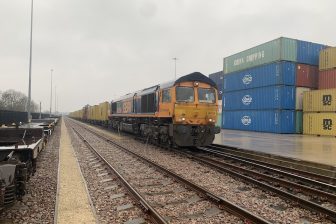
Combined transport: moving ahead or backwards?
The legislative piece that assures a harmonised intermodal regulatory framework in Europe is under fire. Although the main aim of opening up this legislation for discussion was to broaden the support for intermodal transport, it now risks moving into the opposite direction. These recent and crucial developments will be explained by the UIRR in a free workshop on 27 March at the Freight & Terminal Forum.
The Combined Transport Directive (92/106/EEC) is an EU instrument that aims to reduce the negative side-effects of goods transport on the environment and on society by supporting the shift from long distance road transport to long distance rail, inland waterways and maritime transport through economic incentives. However, stemming from 1992 without any prior amendment, the legislative piece is outdated and unlikely to realise the objected modal shift. Therefore, the European Commission has proposed amendments to the Directive.
Proposed amendments
The European Commission has proposed to extend its scope of support for combined transport by increasing the distance of the road leg permitted. The maximum distance will be increased to 150 kilometres with a twenty per cent flexibility. Discussions involve the mechanism detailing how this threshold may be exceeded. Further, some Member States have proposed a new rule permitting them to withdraw every state aid measure in case only the road leg of an international combined transport operation would be carried out on their territory, the UIRR explained.
While the current legislation focuses merely on international transport, the amended version proposes to include national transport as well. This too remains a topic of debate. Moreover, some Member States would like to abolish the presently declared legal equivalence of international road haulage and international combined transport.
Moving backwards
There are more of such debated principles, UIRR explains. For example, a ‘transit clause’ has been introduced, whereby a Member State may unilaterally disqualify a combined transport operation, a technically infeasible documentation is to be provided during a roadside check and Member States refuse to prepare a regular report on the state of combined transport, the organisation said.
“These proposals means that several powers are being transferred back to the national authorities. What was agreed upon in Europe about 25 years ago is now reversed into the opportunity for countries to apply specific regulations. That does not make combined transport more attractive. In this way, the modernisation of the old Directive means a step back from European integration. That is unfortunate and makes the execution of combined transport unnecessarily complicated and therefore unattractive”, comments Ad Toet, project manager of the European ELETA-programme”, commented Ad Toet, a Dutch railway consultant.
Solutions
As the proposal currently on the table is less encouraging to combined transport than existing legislation, it may not be amended at all, fears the UIRR. In the trialogue meetings, the European Parliament, the Commission and the Council are still trying to find solutions for a new, more ambitious and harmonised regulatory framework for combined Transport, the UIRR said.
“The Directive in its current form may be imperfect, but it describes uniform rules for combined transport within the EU Internal Market. As 85 percent of CT trains cross at least one internal border of the EU, it is exceptionally important that the same rules apply on both sides of all internal borders of the European Union”, the lobby organisation stated.
Register now
At the workshop, Ákos Érsek will discuss the impact of the EU Directive on combined transport in the prosperity of intermodal freight shipping in Europe. He will dwell on the the current status and outlook of the ongoing amendment process. He will also look at the future beyond the Directive.
Do you want to attend this workshop? Registration is free of charge. You must first register for the Freight & Terminal Forum, Expo only. Then, you visit the workshop programme and select the workshop of your choice.
Date: 27 March 2019
Time: 15:15 – 16:00





